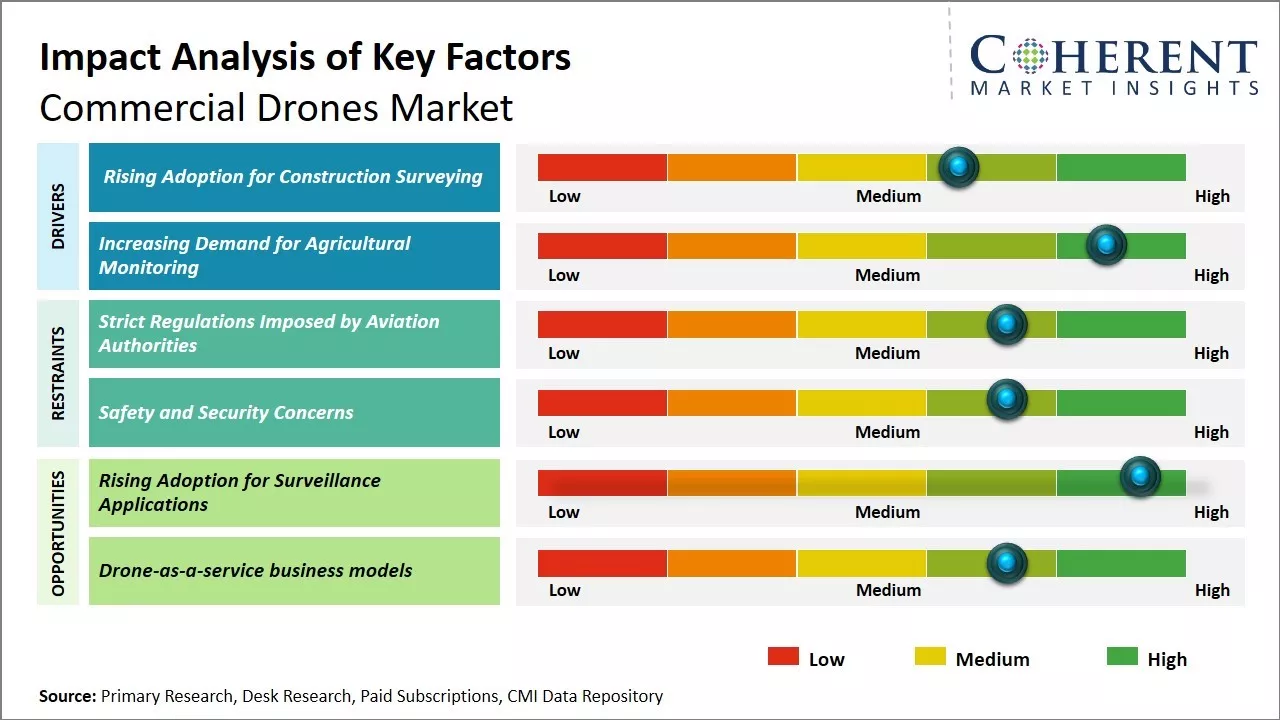The Commercial Drones Market is estimated to be valued at USD 25.35 Bn in 2025 and is expected to reach USD 62.30 Bn by 2032, exhibiting a compound annual growth rate (CAGR) of 13.7% from 2025 to 2032.

To learn more about this report, Request sample copy
The market growth is majorly driven by the increasing adoption of drones in various industries like agriculture, construction, energy & utilities, logistics, and more. Drones help monitor crops and enable precision agriculture, monitor progress of construction projects, and inspect energy infrastructure like power lines & wind turbines easily which is otherwise difficult and hazardous. This has fueled the growth of the commercial drones market across major regions.
The market is expected to witness high demand owing to the increasing investments by leading technology companies in drones and widespread integration of drones in various applications. Furthermore, rapid advancements in drone hardware, software, and technologies like artificial intelligence, blockchain, etc. are supporting new use cases and thereby driving more opportunities. However, concerns around drone regulations and privacy can hamper the growth during the forecast period.
Rising Adoption for Construction Surveying
The construction industry has always relied on conventional methods for surveying buildings, structures, and large construction sites. Projects often involved human surveyors manually documenting dimensions, heights, contours, and other site specifications using traditional tools like measuring tapes, theodolites, and GPS receivers. However, this process was time-consuming, labor-intensive, and posed safety risks to surveyors working at heights or in difficult terrains. Drones have the potential to revolutionize construction surveying by automating much of the data collection process and improving both efficiency and safety. Compared to traditional methods, commercial drones equipped with advanced cameras and sensors can survey large areas much faster while offering bird's-eye perspectives not possible otherwise. They allow collection of high-resolution imagery, 3D models, contour maps and other geospatial data to support various stages of construction from planning and design to progress monitoring. Drones minimize the need for human surveyors to work at dangerous heights or enter confined spaces on site. Their ability to rapidly survey inaccessible areas makes them especially useful for projects involving assets in remote locations or difficult terrains. Many construction companies have already recognized these benefits and are increasingly adopting drone technology for surveying existing structures as well as monitoring ongoing projects. As construction projects grow in scale and complexity worldwide, commercial drones have the potential to significantly boost productivity and safety standards in the surveying process across the industry.
Joining thousands of companies around the world committed to making the Excellent Business Solutions.
View All Our Clients